Introduction
People often ask me: What is your favorite camera?
The answer to that question is easy: My favorite camera is the one I have with me when I need a camera.
People also often ask me: What is your favorite photograph?
My answer to that question is: My favorite photograph is the next one I am going to take.
However, when people ask me things like what camera should I buy, or what backpack should I buy, or what lens should I buy, or what tripod is the best on earth, or what is the best mirrorless camera, the situation is much more complicated and sometimes it is hard to give a good response.
This is because I strongly believe that a photographer should work with the tools that are best for the job and that are also comfortable given the photographer’s skill level and ergonomic requirements. The tools required by a sports photographer are totally different from those required by a landscape photographer, and are likely to be quite different from those required by a commercial photographer that photographs jewelry.
It is crucial for photographers to choose all their tools very carefully because the right tools definitely have a positive influence on the experience of photography and the final result, while the wrong tools have a deleterious effect on both.
Starting Points
To me, the most important starting point in choosing the right tools is asking the question: What is the final product? A closely related question is: What are my quality standards for the final product?
If the final product is a 60 inch highest possible quality Fine Art print, you are going to require a completely different camera system versus if the final product is a small file that is posted on social media and is meant to be seen on smart phones.
The second set of crucial questions to ask is: What is the subject matter I am going to photograph? What kind of environment am I going to be in when photographing?
If you are going to be photographing animals in the Serengeti, you will need a lens that is completely different from the lens that someone who photographs small dead insects indoors with strobes requires. And if your specialty is product photography or architectural photography, you are going to need a camera and lenses that are completely different from what the Serengeti and the insect photographer use.
There are many other questions to ask beyond these two.
Rather than engage in a long, drawn out monologue about all the possibilities, I thought it might be more productive and more interesting for the reader to see a list of what I consider to be some of the best photographic tools on the market as of this writing.
The set of criteria I have used to rate these tools as “some of the best”, in order of importance, is as follows:
1. Image quality. This is the number one criteria. Equipment or software listed must produce superb image quality or help achieve the best possible image quality.
2. Good functional design. It never ceases to amaze me how few photographic products are well designed. The design of the vast majority of the products I come across is mediocre or poor. All products listed are products I consider to be much better designed than other products on the market.
3. Ergonomics. Photo gear with good ergonomics is hard to find. I typically find huge ergonomic flaws in almost every camera, lens and other photo equipment I test or evaluate. Because of this, one of the top criteria for a product to be on the list of “some of the best” is that the product must have good ergonomics.
4. The best possible construction quality. Life is too short to deal with shoddy or sub-standard construction quality products. This is particularly true in photography where one requires extremely precise optical paths, flawless lens elements and very precise lens element placement inside the lenses, high quality coatings, highly accurate sensor placement and alignment, smooth and precise mechanical components, durable moving parts, very accurate timing, and so on…
Any slop or deviations in these parameters cause an instant degradation in image quality and frustration.
Furthermore, the the equipment needs to be rugged. It needs to operate without problems in a broad range temperatures as well as humidity and dust conditions. Equipment sometimes gets dropped or banged against another object and needs to be constructed so it does not suffer functional damage from small accidents or consistent use.
All of the above is not easy to achieve and explains why the best photo gear is relatively expensive to manufacture. Cost cutting for mass production at lower end user prices invariably leads to lower construction quality and lower image quality.
Note that Photo gear that excels at the above four criteria criteria is by definition durable and reliable, and usually tends to have unique features that one does not find in other products.
The list that follows is divided into basic product categories. Note that the products in each category are not listed in any specific order. Each product listed is superb in its own right.
My Recommended List
CAMERA SYSTEMS
- PhaseOne XF camera system with a PhaseOne IQ4 150 back
- PhaseOne XT camera system with a PhaseOne IQ4 150 back
- Leica SL-2 camera system
- Leica M11 camera system
Each one of the systems in this group is unique and is particularly suited for certain uses. Also, each one of these camera systems has been proven to be extremely robust and reliable.
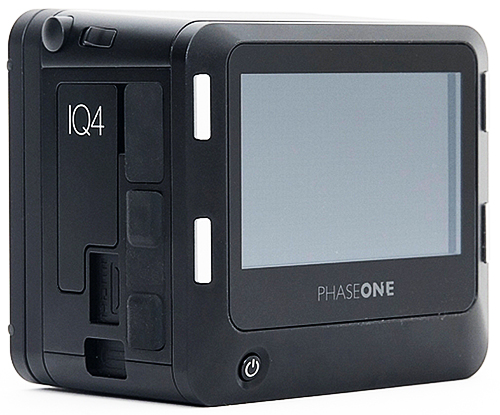
PhaseOne IQ4 150 back
The PhaseOne IQ4 150 back produces the highest quality color images of any device currently available. It also offers superior ergonomics and better functionality than all other Medium Format backs and cameras. It is built to extreme precision standards and at the same time also built like a tank. In my opinion, it is without question the top choice for a color photography Medium Format back.
Similarly, the Achromatic version of the IQ4 back is the top choice for Black and White photography.
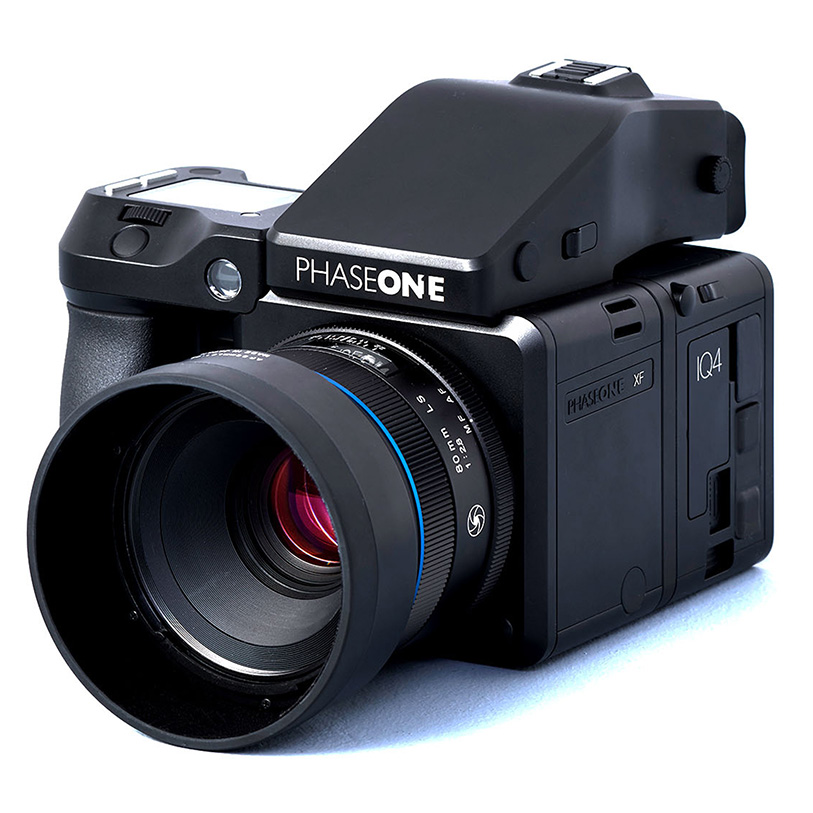
PhaseOne XF camera
The PhaseOne XF camera is arguably the most sophisticated DSLR on the market, with the most extensive (truly useful) functionality.
It was originally designed to establish a new benchmark as the highest quality most capable Medium Format camera and one of the key goals was that it would remain in that position for 20 years. This meant that the camera had to be highly configurable, as well as easily upgradeable.
The XF is definitely highly configurable, the ergonomics are superb and it has a chameleon like personality that can morph it from a camera for landscape to a fashion camera to a product or a portrait camera. The view through the prism finder is the best I have ever seen and is likely the best ever in the history of photography. The build quality is exceptional.
The XF is a very sophisticated platform that can be upgraded with additional capabilities via software. In fact, the whole system of cameras and backs from PhaseOne is designed to be a software upgradeable ecosystem.
Things such as a built in seismometer that releases the shutter only when the vibration is below a certain threshold, the averaging of hundreds of images (the processing takes only a few seconds inside the camera) to obtain a single image file similar to a long exposure, automatic focus stacking, a super quick two exposure capability that delivers files with 18+ F/Stops of dynamic range, controlling multiple strobes individually directly from the camera and the best tethering capabilities on the market, all quickly become routine with the XF.
The Schneider Blue ring lenses lenses for the XF are superb.
Given all the functionality in the camera, plus the Medium Format reflex system, interchangeable backs, solid glass prism finder and Medium Format lenses with large apertures, the XF system is a relatively heavy camera system. This may be an issue for some photographers while it is acceptable for others.
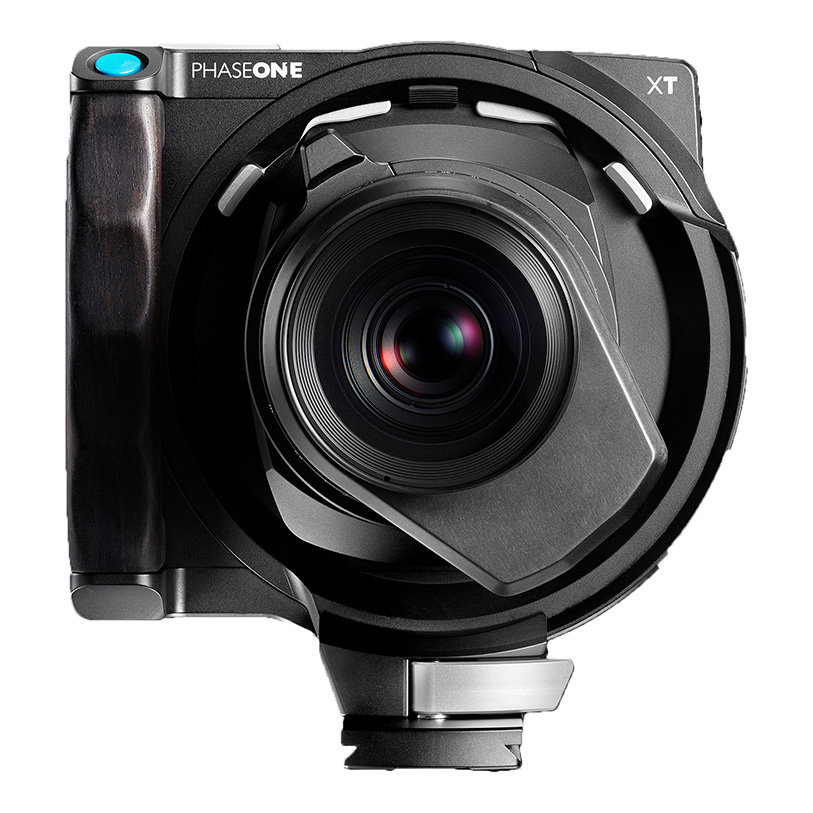
PhaseOne XT camera
The PhaseOne XT camera is completely different from the XF.
The XT is a basic Technical camera that focuses on ultimate simplicity, small size and less weight.
The camera was designed to be the optimum camera for landscape photographers, but it also fits the needs of architectural photographers and can certainly be used for other kinds of photography..
One important comment about the XT and view/technical cameras in general is that the experience of shooting with these cameras is quite different from all others. It is much more calming, more focused and more determined. Shooting with a technical camera has a rhythm and a smoothness that makes the shooting experience particularly intense and massively enjoyable.
While the PhaseOne XT has more limited camera and lens movements than a number of models from ALPA and CAMBO, combined with current digital editing tools the movements are sufficient for the vast majority of situations a landscape or an architectural photographer is likely to encounter..
The electronic integration of the lenses with the body and the back in the XT is totally unique and pretty compelling. It allows for functionality that is impossible to achieve any other way. No other technical camera has this type of integration.
The current lens range is somewhat limited in the longer focal lengths, but new lenses are in the works.
One of the beauties of the XT (and technical cameras in general) is that if required, one can mount lenses of other brands and other types on the camera. One can go outside the range of the fully integrated XT lenses and use other lenses with an XT shutter using a single cable connection from the shutter to a PhaeOne digital back. One can also have the lenses mounted in tilt/shift mounts which greatly increases the range of movements (currently PhaseOne offers only one XT lens in a tilt mount). Except for a small notch, the XT mount is a standard CAMBO mount. CAMBO accepts special orders to mount non-standard lenses in an XT mount.
It is also possible to forego the lens shutter completely and use the back in electronic shutter mode. This allows one to use any lens that can be mounted on an XT mount. This includes a huge number of technical camera and view camera lenses from various brands. Even repro and enlarging lenses can be made to work with the XT.
A number of experts I have interfaced with over the years have told me that technical camera lenses are consistently superior to other camera lenses. My personal experience certainly confirms this. Looking at files on the computer and making some test prints, it appears to me that the Rodenstock XT lenses are the best MF lenses on the market today.
The XT/IQ4 150 system with the XT Rodenstock lenses is the very pinnacle of Medium Format image quality. Nothing that I know of that can be purchased commercially can. match the image quality of this system.
For those who are intent in achieving superior image quality and have chosen Medium Format for this reason, the top choice is one of the above PhaseOne systems.
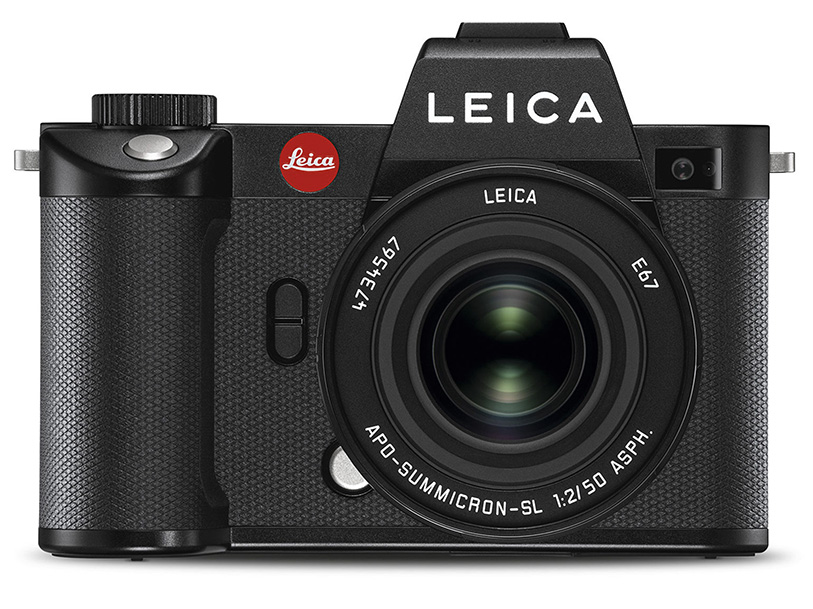
Leica SL-2 camera
The Leica SL-2 system is, in my opinion, the best 35mm mirrorless system based on the four criteria I have outlined in this article.
Build quality is superb and the ergonomics are exceptional. These two things are a Leica specialty. What impresses me most are the massive capabilities of the system and the thought that has gone into organizing enormous complexity into a totally intuitive and deceptively simple interface.
The level of innovation in this camera system is remarkable. I will mention only one example: The manual focusing mechanism in the lenses is not a bunch of gears and cams like everyone else’s. It is an electromagnetic system where a set of magnets in the lens rotates as you rotate the focusing ring. This produces a signal that is then processed to run actuators that actually focus the lens. The result is amazing smoothness and accuracy with perfect feedback to the user. But not only that, it allows the user to configure how many turns of the ring it takes to go from minimum distance focus to infinity, as well as to program a variable focusing response where the amount of focus change depends not only on the amount of rotation, but also on the speed at which the ring is rotated.
The finesse and precision of the SL-2 system must be experienced to be appreciated. It definitely has what many people refer to as “the Leica feel”. At the same time, it is extremely rugged. In the hand, it feels almost like a solid metal brick.
And now for the key question: Image quality. The answer is that it is extremely good.
First of all, the Leica SL-2 lenses are superb. The prime lenses are so good that the words “they are in a class by themselves” come to mind. The sensor and the image processor are also superb and it is clear that Leica has done a lot of work in the internal camera software to deliver image files that look gorgeous straight out of the camera.
In 8-shot mode, the SL-2 produces a 187 Megapixel image delivering resolution that rivals the best Medium Format gear. This is astonishing performance for a 35 mm device. The color rendition is superb straight out of the camera and requires very little editing. Even when shooting handheld in one shot mode, the image quality is exceptional.
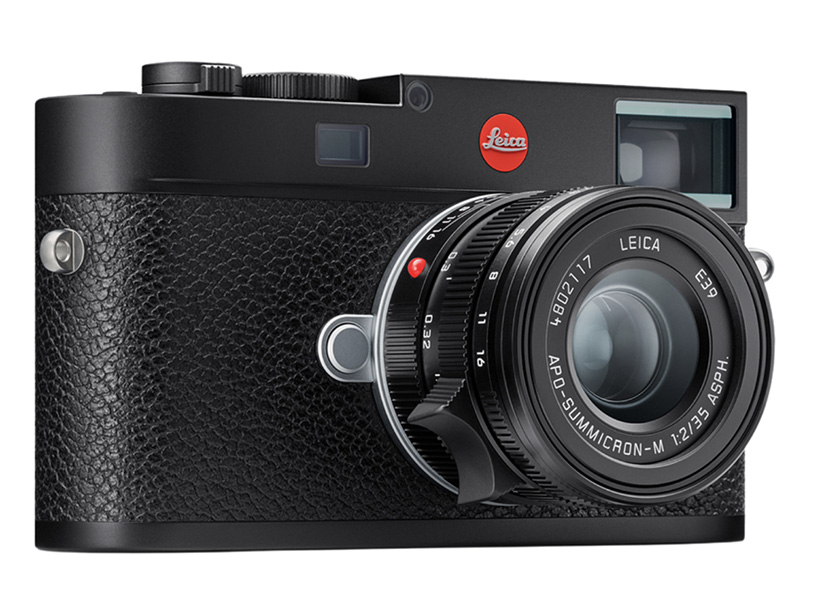
Leica M 11 camera
The Leica M11 is a great improvement over prior digital M cameras and it is such a great camera that it tempts me to say that it might be the best M camera in the entire history of the M system.
Holding an M11 feels like holding a combination of a work of art with the highest quality optical, mechanical and electronic systems available today.
The fact that a device this small can produce the kind of image quality that comes out of it is hard to believe. The fit, finish, precision and smoothness of the device is in the stratosphere.
Leica M lenses are legendary in terms of quality of construction, as well as image quality. The image quality has continued to improve with the more recent M lenses. These new lenses preserve and enhance the characteristics that are so loved by Leica users, while at the same time delivering further improvements in key optical areas, such as increased resolution, true apochromatic design, reduced flare, etc.
Just like the PhaseOne XF and the PhaseOne XT are completely different cameras, the Leica SL-2 and the Leica M11 are also completely different cameras.
The M11 is so light and so small that it can go places where the SL-2 would become a burden. One can hike or climb up and down tens of miles with the M11 and not give it a thought. Other cameras would be a challenge for these kinds of distances. One can easily put an M11 in a coat pocket or a small holster, and carry several M lenses in a couple of other pockets.
The M11 is mostly at home in handheld relatively fast shooting. But most importantly, the M11 is a rangefinder camera, and rangefinder photography is truly unique and somehow makes the photographer also produce unique photographs.
This is not something that can be explained with words. It just has to be experienced. The fact is that the world looks different through a rangefinder camera and this leads to final photographs that are different.
I recently did an experiment with one of my closest photographer friends: We each went out with an M camera and shot some landscapes. We live in different countries, so the landscapes were very different. We made a first exposure using the rangefinder. After the first exposure, we did not move and using the Visoflex electronic viewfinder attached to the camera made a second exposure focusing and framing the same scene as it looked best through the Visoflex. Sometimes the Visoflex shot was very close to the rangefinder shot, sometimes it differed a bit more. When we looked at our photographs afterwards, one hundred percent of the time we preferred the first photograph taken using the rangefinder!
In terms of image quality, at native resolution and 300 dpi, the M11 produces surprisingly beautiful 32 inch prints. With a little up-rezing 50 inch prints from this tiny device still look surprisingly beautiful.
All I can say is that the M11 is a special experience and an absolute joy to use.
It is important to note that straight out of the camera both, the SL-2 and the M11 photographs have an unmistakable “Leica Look” to them that is unique and beautiful. The files require very little editing, much less than files from other cameras. It is very clear that Leica has spent a lot of time and put a lot of effort to achieve this.
My bottom line is that I prefer the image quality of these two Leica cameras to everything else that I have used or tested in the 35 mm world.
These two Leicas are also in a league of their own in terms of ergonomics and construction quality.
TRIPODS
Tripods and tripod heads are a very personal thing, so I am sure that a number of photographers would make different choices from mine.
For example, I have never liked and still do not like ball heads. I have tested and tried to use just about every ball head out there and I do not like any of them. And yet, I see lots of people who love them. I have nothing to say other than they just do not resonate with me. I also do not like heads where every movement needs to be locked and unlocked. I would much rather have a self locking highly precise geared head for the key movements. This is my personal bias.
So the tripods that made my list are:
- Peak Design Travel Tripod
- Gitzo Mountaineer GT3542 Tripod
- Gitzo Series 5 Systematic GT5543LS Tripod
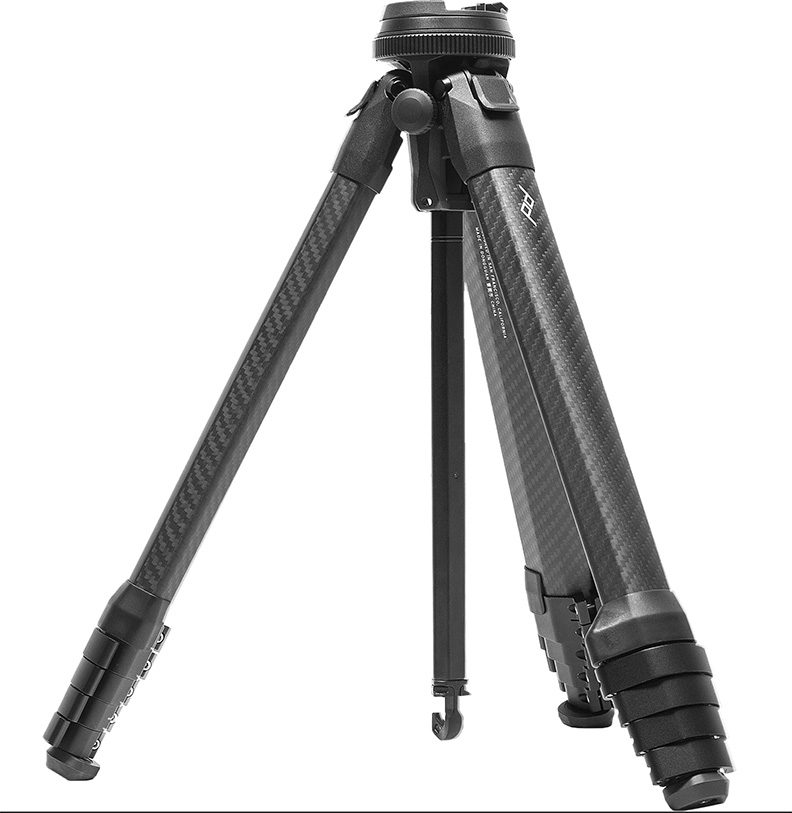
Peak Design Travel Tripod
I have tried quite a few small travel tripods and I generally find them too kludgy, too large, too heavy and with lots of ergonomic flaws. There is only one travel tripod I have come across that is an exception: The Peak Design Travel Tripod.
When folded, it is a very small package, the design is very clever and in the field it works extremely well. It is the only travel tripod I have ever liked, and therefore the only one that made my list.
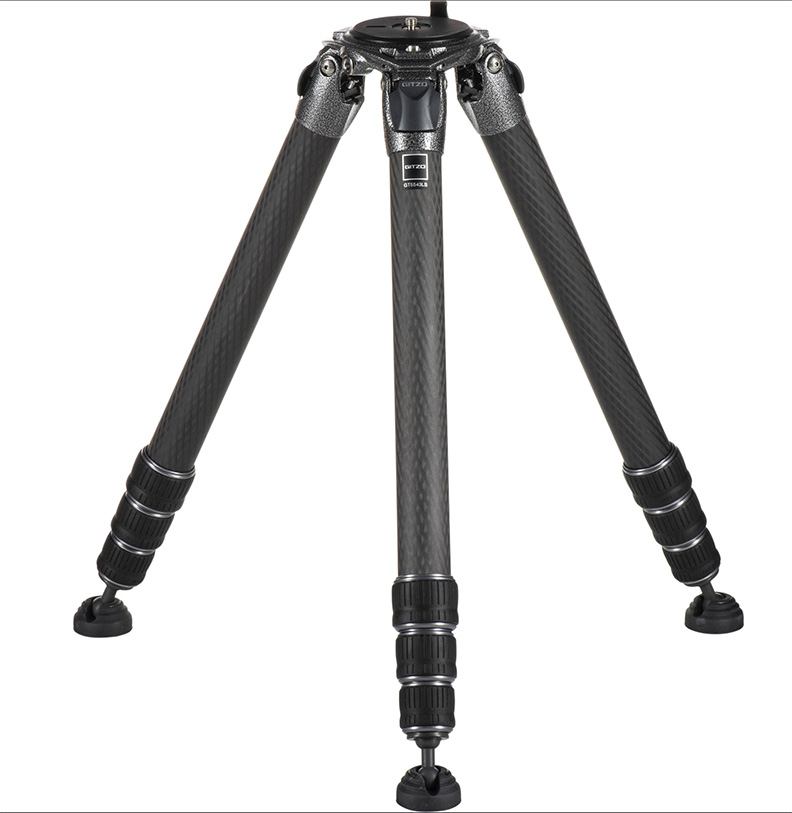
Gitzo GT5543LS Tripod
When it comes to larger tripods, I am partial to the Gitzo tripods. There are a number of reasons for this:
The quality of construction of the Gitzo tripods is likely the best on the market. They will just about last forever and can take quite a bit of abuse. More importantly, Gitzo consistently uses the most advanced carbon fiber construction of anyone in the industry. The ergonomics is, in my opinion, better than the competition and the locking mechanisms keep getting better and better with every generation.
The best tripod I have ever used is a Gitzo Series 5 Ocean Tripod which unfortunately was discontinued not too long after its introduction.
Of the currently available Gitzo tripods, the two that I particularly like are the GT3542 (Series 3) and the GT5543LS (Series 5).
The Series 3 tripod is a great all around tripod. It is quite small when folded, it is very stable, it extends to a height that will satisfy the vast majority of situations and it is light enough to take anywhere.
The Series 5 tripod is quite massive, and yet it folds down to less than 2 feet in length. This tripod is rock solid and massively stable. It can easily handle a lot of weight. It is obviously heavier, has thicker legs and a much wider platform than the Series 3, but it is still quite portable. If one wants maximum stability, it is hard to beat this tripod.
TRIPOD HEADS
The tripod heads that made my list are:
- Linhof 3D Micro Geared Leveling Pan And Tilt Head
- Arca-Swiss C1 Cube Geared Head
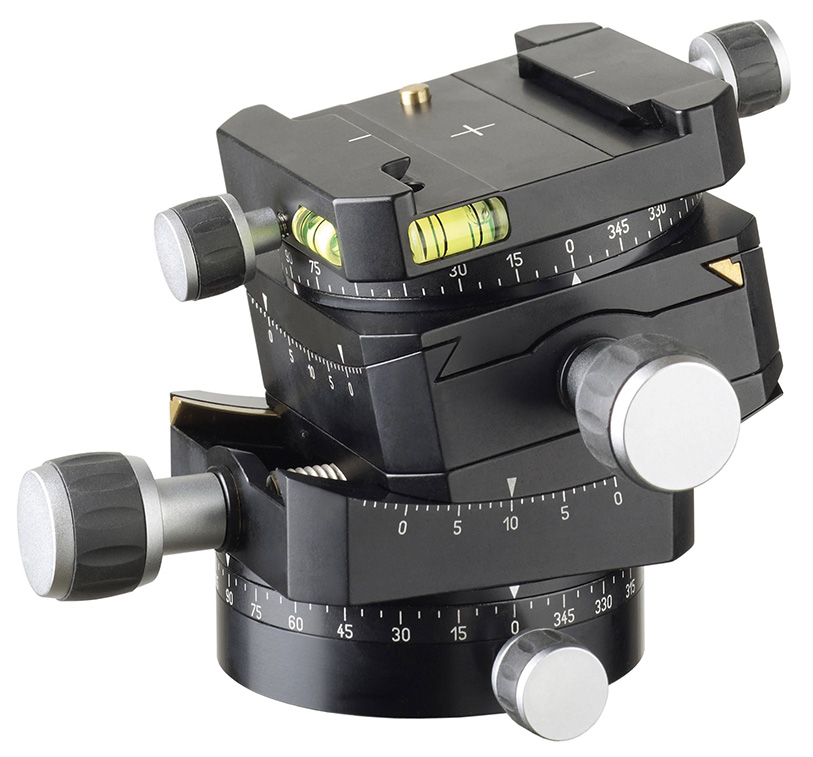
Linhof 3D Micro Geared Leveling Pan And Tilt Head
The Linhof 3D Micro Geared Leveling Pan And Tilt Head is simply the smoothest and most precise head I have ever used. Everything about this head is precise and extremely well designed. The fact that Linhof has been in the business of designing and machining high precision top quality photographic equipment for so many years clearly comes through in this head.
The geared mechanism is so smooth that it feels like a continuous movement with no gears. When you complete a geared adjustment, the head is automatically self locked, and I mean locked rock solid. It is an absolute joy to use.
The only limitation of this head is the range of movements. It is enough for most situations, but it is not enough if one wants to point the camera up or down at a steep angle. For this reason, many people mount a leveling platform underneath this head to perform a quick rough adjustment first, followed by the fine precise adjustments using the head afterwards. A small platform with a 20-25 degree maximum tilt does the job.
The other alternative for steep angles is to use the Linhof Angle Device which was designed to be used with this head and allows the camera to be pointed up or down in any direction. You can rotate the camera around a horizontal axis a full 360 degrees. One advantage of this device is that the camera is mounted in a position slightly offset from the center of the head, which makes pointing the camera straight down without getting the tripod legs in the picture much easier.
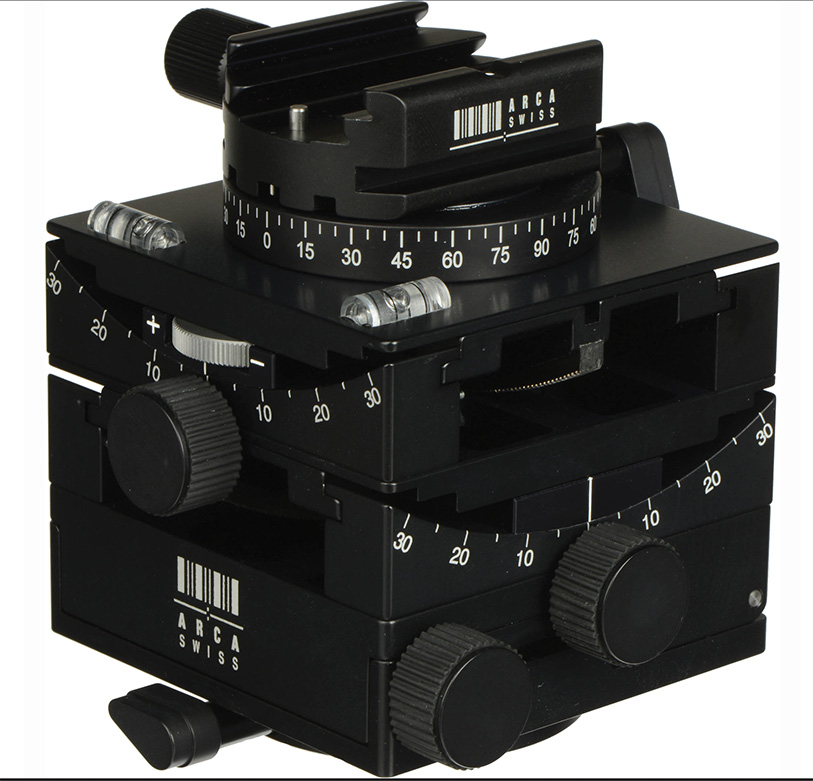
Arca-Swiss C1 Cube Geared Head
The Arca-Swiss C1 Cube Geared Head is not nearly as smooth as the Linhof head, and the gears are not as protected as they are in the Linhof, but it is an excellent workhorse.
It has the advantage of a larger range of movements, including the ability to unlock the bottom and manually tilt the whole geared section to an angle that combined with a geared movement achieves up to a vertical position for the camera mount plate.
This head takes a little bit of practice at first, but once one is used to it, it feels totally natural and ergonomic and works very well in the field.
Both of these tripod heads are quite rugged and extremely reliable.
CAMERA BAGS AND BACKPACKS
- NYA-EVO backpacks
- Oberwerth camera bags and backpacks
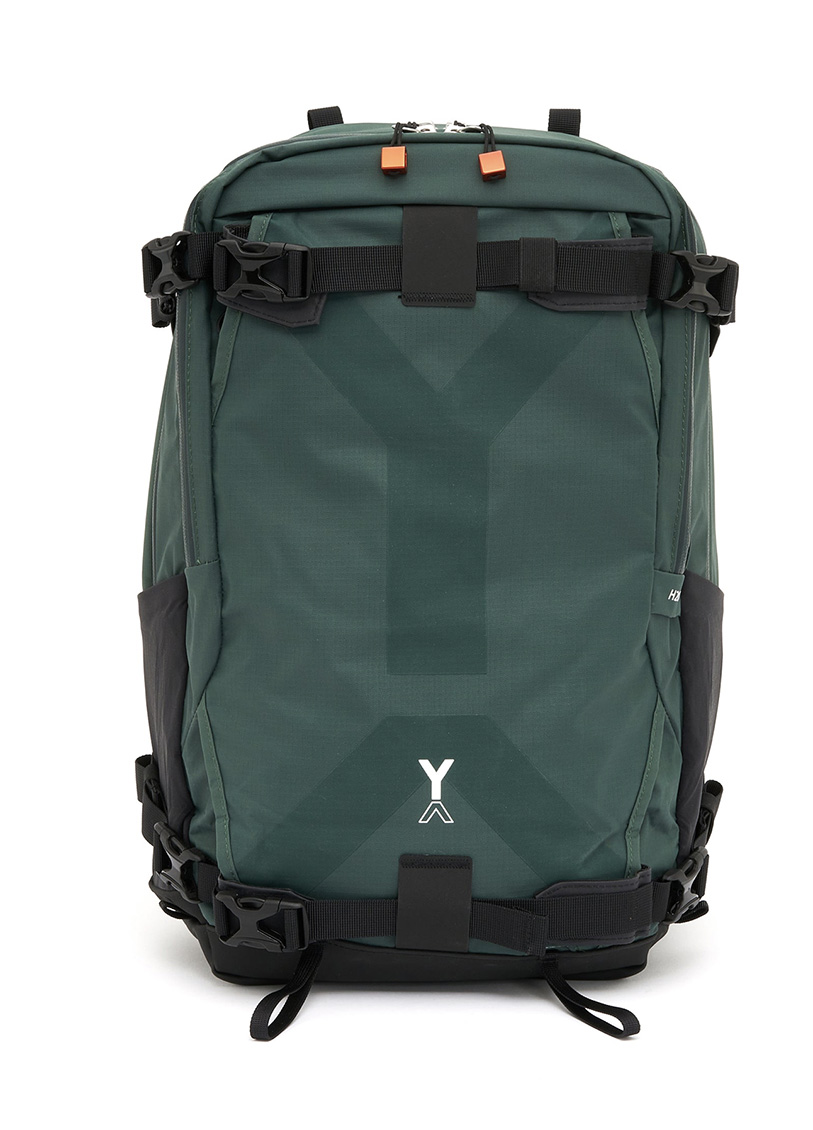
NYA-EVO Fjord 36 backpack
The NYA-EVO ADVENTURE CAMERA BACKPACKS are a wonderful choice for adventure travel, hiking, climbing and other outdoor activities. The functional design is the best I have seen to date and the quality of construction is excellent.
The Fjord 36 is my favorite NYA-EVO backpack. It looks relatively small, but can carry a lot of photography gear (and other things). It is very comfortable to carry (for my body, the most comfortable pack I have ever used) and functions extremely well in the field. I personally do not have a need for anything bigger, but I am sure other photographers might be better off with something smaller or something bigger.
One of my favorite things about the NYA-EVO backpacks is the main rear opening. A rear opening is in general much better than the traditional front opening of most backpacks. When you place the backpack with the front on the ground, the rear opening is easier to operate versus a front opening and more importantly, it keeps the dirt and mud away from the straps and the back of the pack so the dirt and mud do not end up on your clothing.
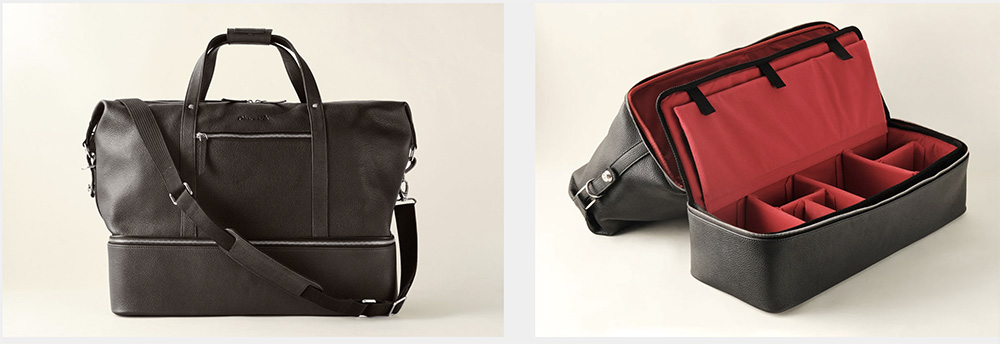
Oberwerth Weekender
The OBERWERTH CAMERA BAGS AND BACKPACKS are quite different from anything else on the market and are really in a class of their own.
They could be described as ultra luxury items that would be right at home at a fancy gala event. But they could also be described as practical workhorses that can be carried everyday or as the right choice to take on a photographic expedition.
The quality of the materials and the craftsmanship of Oberwerth products is “over the top”. It is by quite a margin well above anything I have seen from any other photography oriented bags or backpacks. The leather and other materials they use are of stunning quality. The craftsmanship is simply extraordinary. Every product they make is built to standards that can only be described as an artisanal work of art. The durability of the products is also exceptional.
All of the above would be worthless if the products were not well designed. Luckily, every Oberwerth bag or backpack I have tested or used has been extremely well thought out and their designs are also exceptionally good.
The icing on the cake is that on top of all of the above, they make some products that are highly innovative and are completely unique.
An example that comes to mind is their weekender bags which are designed to carry clothing and toiletries for several days, but unlike anything else on the market, the bags have a special compartment at the bottom for a full camera system and lenses inside a removable padded insert. The removable insert easily accommodates a substantial 35 mm system or a Medium Format system with 3 or 4 lenses plus accessories.
The Oberwerth Photo Backpack sling is also somewhat of a unique product and is my favorite way to carry a small camera system like a Leica M with 4 lenses a couple of extra batteries and accessories.
There are literally over 100 different camera bags and backpacks that Oberwerth features on their website. I have tried a number of them and they have all been superb. It is hard for me to make any specific recommendations of models since there are so many choices.
If you are interested in an Oberwerth product, there is probably one that fits your needs and a product from this brand is likely to be very well designed and constructed with better materials and craftsmanship than anything else on the market.
Final Thoughts
The making a photograph is a journey.
The journey for me begins with an idea, followed by research for a location where I can implement that idea. What follows are preparations that include the choice of equipment, pre-visualizing the photographs I want to create and determining what the final product is going to be. After making travel preparations and arranging all the logistics, the adventure begins.
Once on location, exploring the light and specific sites becomes a most pleasurable part of the process And capturing the images is one of the most challenging, exciting, special and sublime parts of the process.
After I return home, I usually make it a point not to look at my images for several weeks. Usually 2-3 months minimum. This is because one is too biased about external factors that can affect the editing process.
For example, I remember once editing some images the very day I returned home, and I discarded one image very quickly. Several years later, by coincidence I was looking at the images from that trip and the image I discarded stood up as the best image of the whole trip!
So why did I discard it? Because right before shooting it, as I was walking on tall grass carrying my camera on the tripod, I stepped on a big blob of fresh animal poop that was truly disgusting and got all over my boots and my pants.
Somehow, at a subliminal level that bad experience biased my choice for that specific image. After some time had passed and the poop experience was no longer fresh, that bias disappeared. I was able to focus only on the image itself and not what happened just before.
One can also be biased the other way. If something very nice happened just before or while shooting an image, one is likely to pick a mediocre image and decide it is a great image even though in reality it is a mediocre photograph.
As Charlie Chaplin once said, one of the secrets of being a genius is good editing. Choosing the right photographs and spending the time and effort to edit each image to perfection is critical in making a good photograph.
Through the whole process mentioned above there is equipment involved. Cameras, lenses, tripods, carrying gear, computers, monitors, and more. Some sort of gear is utilized almost every step of the way, and this includes even proper clothing, boots, etc
The final result is dependent on the whole process going smoothly. If something does not go smoothly, or is not quite right, it is inevitably going to be reflected in the final image. Furthermore, it will detract from the pleasure of the photographic experience.
This is why having the proper gear is so important.
While not every photographer will resonate with my list of some of the best gear, I hope that this article will be useful in terms of stimulating thought about photo gear and prompting photographers to develop their own criteria and their own list.
The ultimate quality of a photograph is without question mostly dependent on the photographer, but the choice of photographic gear and the preparation before shooting also play a vital role in the whole process and certainly influence the final result.
This is why I always recommend having the best equipment for the job at hand as well as careful preparation and pre-visualization BEFORE each and every photographic endeavor.






Your Thoughts